T cell engagement of cross-presenting microglia protects the brain from a nasal virus infection
- PMID: 32503876
- PMCID: PMC7416530
- DOI: 10.1126/sciimmunol.abb1817
T cell engagement of cross-presenting microglia protects the brain from a nasal virus infection
Abstract
The neuroepithelium is a nasal barrier surface populated by olfactory sensory neurons that detect odorants in the airway and convey this information directly to the brain via axon fibers. This barrier surface is especially vulnerable to infection, yet respiratory infections rarely cause fatal encephalitis, suggesting a highly evolved immunological defense. Here, using a mouse model, we sought to understand the mechanism by which innate and adaptive immune cells thwart neuroinvasion by vesicular stomatitis virus (VSV), a potentially lethal virus that uses olfactory sensory neurons to enter the brain after nasal infection. Fate-mapping studies demonstrated that infected central nervous system (CNS) neurons were cleared noncytolytically, yet specific deletion of major histocompatibility complex class I (MHC I) from these neurons unexpectedly had no effect on viral control. Intravital imaging studies of calcium signaling in virus-specific CD8+ T cells revealed instead that brain-resident microglia were the relevant source of viral peptide-MHC I complexes. Microglia were not infected by the virus but were found to cross-present antigen after acquisition from adjacent neurons. Microglia depletion interfered with T cell calcium signaling and antiviral control in the brain after nasal infection. Collectively, these data demonstrate that microglia provide a front-line defense against a neuroinvasive nasal infection by cross-presenting antigen to antiviral T cells that noncytolytically cleanse neurons. Disruptions in this innate defense likely render the brain susceptible to neurotropic viruses like VSV that attempt to enter the CNS via the nose.
Copyright © 2020 The Authors, some rights reserved; exclusive licensee American Association for the Advancement of Science. No claim to original U.S. Government Works.
Conflict of interest statement
Figures
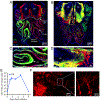
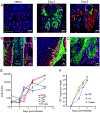
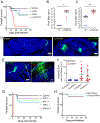

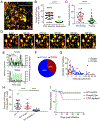

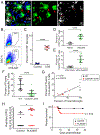
Similar articles
-
MAVS signaling of long-lived brain-resident myeloid cells is needed during viral encephalitis to adjust the transcriptome of CNS infiltrating CD8+ T cells.J Neuroinflammation. 2025 Jul 7;22(1):175. doi: 10.1186/s12974-025-03497-1. J Neuroinflammation. 2025. PMID: 40619428 Free PMC article.
-
Interferon-induced protein Ifit2 protects mice from infection of the peripheral nervous system by vesicular stomatitis virus.J Virol. 2014 Sep;88(18):10303-11. doi: 10.1128/JVI.01341-14. Epub 2014 Jul 2. J Virol. 2014. PMID: 24991014 Free PMC article.
-
Microglia Activate Early Antiviral Responses upon Herpes Simplex Virus 1 Entry into the Brain to Counteract Development of Encephalitis-Like Disease in Mice.J Virol. 2022 Mar 23;96(6):e0131121. doi: 10.1128/JVI.01311-21. Epub 2022 Jan 19. J Virol. 2022. PMID: 35045263 Free PMC article.
-
The role of T-cell-mediated mechanisms in virus infections of the nervous system.Curr Top Microbiol Immunol. 2001;253:219-45. doi: 10.1007/978-3-662-10356-2_11. Curr Top Microbiol Immunol. 2001. PMID: 11417137 Review.
-
Brain-Resident T Cells Following Viral Infection.Viral Immunol. 2019 Jan/Feb;32(1):48-54. doi: 10.1089/vim.2018.0084. Epub 2018 Sep 18. Viral Immunol. 2019. PMID: 30230418 Free PMC article. Review.
Cited by
-
Olfactory impairment in psychiatric disorders: Does nasal inflammation impact disease psychophysiology?Transl Psychiatry. 2022 Aug 5;12(1):314. doi: 10.1038/s41398-022-02081-y. Transl Psychiatry. 2022. PMID: 35927242 Free PMC article. Review.
-
Microglia Reduce Herpes Simplex Virus 1 Lethality of Mice with Decreased T Cell and Interferon Responses in Brains.Int J Mol Sci. 2021 Nov 18;22(22):12457. doi: 10.3390/ijms222212457. Int J Mol Sci. 2021. PMID: 34830340 Free PMC article.
-
CXCL10highTNFαhighKi67+ Microglia Recruit and Activate CD8+ T Cells in the Brainstem During Experimental Cerebral Malaria.CNS Neurosci Ther. 2025 Jun;31(6):e70425. doi: 10.1111/cns.70425. CNS Neurosci Ther. 2025. PMID: 40457525 Free PMC article.
-
The potential role of microvascular pathology in the neurological manifestations of coronavirus infection.Fluids Barriers CNS. 2020 Sep 10;17(1):55. doi: 10.1186/s12987-020-00216-1. Fluids Barriers CNS. 2020. PMID: 32912226 Free PMC article. Review.
-
Toll-like Receptors in Viral Encephalitis.Viruses. 2021 Oct 14;13(10):2065. doi: 10.3390/v13102065. Viruses. 2021. PMID: 34696494 Free PMC article. Review.
References
Publication types
MeSH terms
Grants and funding
LinkOut - more resources
Full Text Sources
Research Materials

